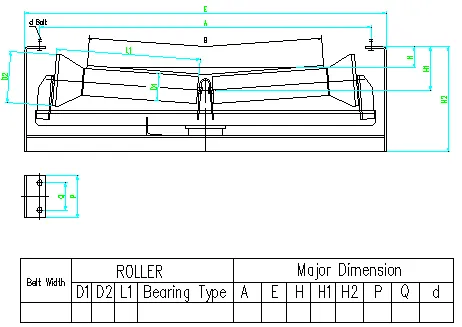 Afrikaans
Afrikaans  Albanian
Albanian  Amharic
Amharic  Arabic
Arabic  Armenian
Armenian  Azerbaijani
Azerbaijani  Basque
Basque  Belarusian
Belarusian  Bengali
Bengali  Bosnian
Bosnian  Bulgarian
Bulgarian  Catalan
Catalan  Cebuano
Cebuano  Corsican
Corsican  Croatian
Croatian  Czech
Czech  Danish
Danish  Dutch
Dutch  English
English  Esperanto
Esperanto  Estonian
Estonian  Finnish
Finnish  French
French  Frisian
Frisian  Galician
Galician  Georgian
Georgian  German
German  Greek
Greek  Gujarati
Gujarati  Haitian Creole
Haitian Creole  hausa
hausa  hawaiian
hawaiian  Hebrew
Hebrew  Hindi
Hindi  Miao
Miao  Hungarian
Hungarian  Icelandic
Icelandic  igbo
igbo  Indonesian
Indonesian  irish
irish  Italian
Italian  Japanese
Japanese  Javanese
Javanese  Kannada
Kannada  kazakh
kazakh  Khmer
Khmer  Rwandese
Rwandese  Korean
Korean  Kurdish
Kurdish  Kyrgyz
Kyrgyz  Lao
Lao  Latin
Latin  Latvian
Latvian  Lithuanian
Lithuanian  Luxembourgish
Luxembourgish  Macedonian
Macedonian  Malgashi
Malgashi  Malay
Malay  Malayalam
Malayalam  Maltese
Maltese  Maori
Maori  Marathi
Marathi  Mongolian
Mongolian  Myanmar
Myanmar  Nepali
Nepali  Norwegian
Norwegian  Norwegian
Norwegian  Occitan
Occitan  Pashto
Pashto  Persian
Persian  Polish
Polish  Portuguese
Portuguese  Punjabi
Punjabi  Romanian
Romanian  Russian
Russian  Samoan
Samoan  Scottish Gaelic
Scottish Gaelic  Serbian
Serbian  Sesotho
Sesotho  Shona
Shona  Sindhi
Sindhi  Sinhala
Sinhala  Slovak
Slovak  Slovenian
Slovenian  Somali
Somali  Spanish
Spanish  Sundanese
Sundanese  Swahili
Swahili  Swedish
Swedish  Tagalog
Tagalog  Tajik
Tajik  Tamil
Tamil  Tatar
Tatar  Telugu
Telugu  Thai
Thai  Turkish
Turkish  Turkmen
Turkmen  Ukrainian
Ukrainian  Urdu
Urdu  Uighur
Uighur  Uzbek
Uzbek  Vietnamese
Vietnamese  Welsh
Welsh  Bantu
Bantu  Yiddish
Yiddish  Yoruba
Yoruba  Zulu
Zulu Essential Components for Efficient Mining Conveyor Systems and Their Maintenance Solutions
Understanding Mining Conveyor Parts A Key Component in Material Transport
Mining operations are intricate systems that require careful consideration of various elements, and one of the most critical components within these systems is the conveyor belt. Conveyor systems play a vital role in transporting materials across different stages of the mining process. They are designed to handle a variety of materials, from ore to overburden, and ensuring their efficiency and reliability is crucial for the overall success of a mining operation. This article delves into the essential conveyor parts used in mining and their significance.
Key Conveyor Components
1. Belt The conveyor belt is the most visible and arguably the most critical component of the conveyor system. It is typically made from durable materials such as rubber or PVC, designed to withstand the harsh conditions of mining environments, including extreme temperatures, heavy loads, and abrasive materials. The choice of belt material is fundamental, as it affects the durability and efficiency of the system.
2. Idlers and Rollers Idlers support the conveyor belt and help in maintaining its shape and alignment. They are strategically placed along the conveyor's length to minimize friction and wear. Rollers, often used in conjunction with idlers, provide additional support and contribute to the overall smooth operation of the conveyor belt. Using high-quality idlers and rollers can significantly reduce downtime and maintenance costs.
3. Drives and Pulley Systems The drive system consists of motors and gearboxes that provide the necessary force to move the conveyor belt. Pulleys are integral to this system, as they facilitate the motion of the belt by turning around a shaft. The drive pulleys are located at the head end, where the material is discharged, while return pulleys are found at the tail end to complete the circuit.
mining conveyor parts

4. Skirting and Chutes Containment and control of the material being transported are essential to minimize spillage and environmental impact. Skirting is designed to seal the edges of the conveyor belt, preventing material loss, while chutes guide the flow of material from one conveyor to another or to stockpiles. Properly designed skirting and chutes also contribute to the safety and efficiency of the entire system.
5. Alignment and Tensioning Devices Maintaining proper alignment and tension is critical to the performance of a conveyor system. Misalignment can lead to premature wear and failure of components, while inadequate tension can cause slippage or belt damage. Alignment and tensioning devices, such as take-up systems, play a significant role in ensuring that the belt runs smoothly and efficiently throughout its operational life.
Importance of Maintenance
Given the demanding nature of mining operations, regular maintenance of conveyor parts is essential. Neglecting routine checks can lead to unexpected breakdowns, resulting in costly downtime and reduced productivity. A comprehensive maintenance regime should include inspections of belt wear, roller condition, and drive efficiency. Additionally, prompt replacement of worn-out components ensures that the conveyor system remains functional and effective.
Conclusion
In summary, mining conveyor parts are indispensable for the efficient transport of materials within a mining operation. The interplay of the various components—belts, idlers, drives, and others—creates a cohesive system that can significantly enhance productivity. Understanding the function and importance of these parts allows mining companies to make informed decisions about their operations, maintenance, and investments in technology. As the industry continues to evolve, innovations in conveyor technology promise to further improve the efficiency and effectiveness of material handling in mining. Therefore, prioritizing the quality and maintenance of conveyor parts will remain a cornerstone of successful mining operations.
-
Revolutionizing Conveyor Reliability with Advanced Rubber Lagging PulleysNewsJul.22,2025
-
Powering Precision and Durability with Expert Manufacturers of Conveyor ComponentsNewsJul.22,2025
-
Optimizing Conveyor Systems with Advanced Conveyor AccessoriesNewsJul.22,2025
-
Maximize Conveyor Efficiency with Quality Conveyor Idler PulleysNewsJul.22,2025
-
Future-Proof Your Conveyor System with High-Performance Polyurethane RollerNewsJul.22,2025
-
Driving Efficiency Forward with Quality Idlers and RollersNewsJul.22,2025





























